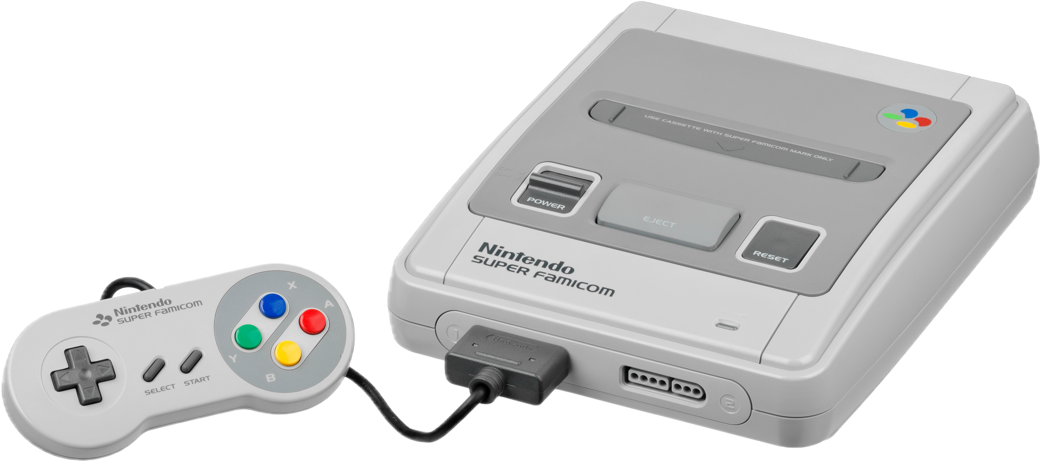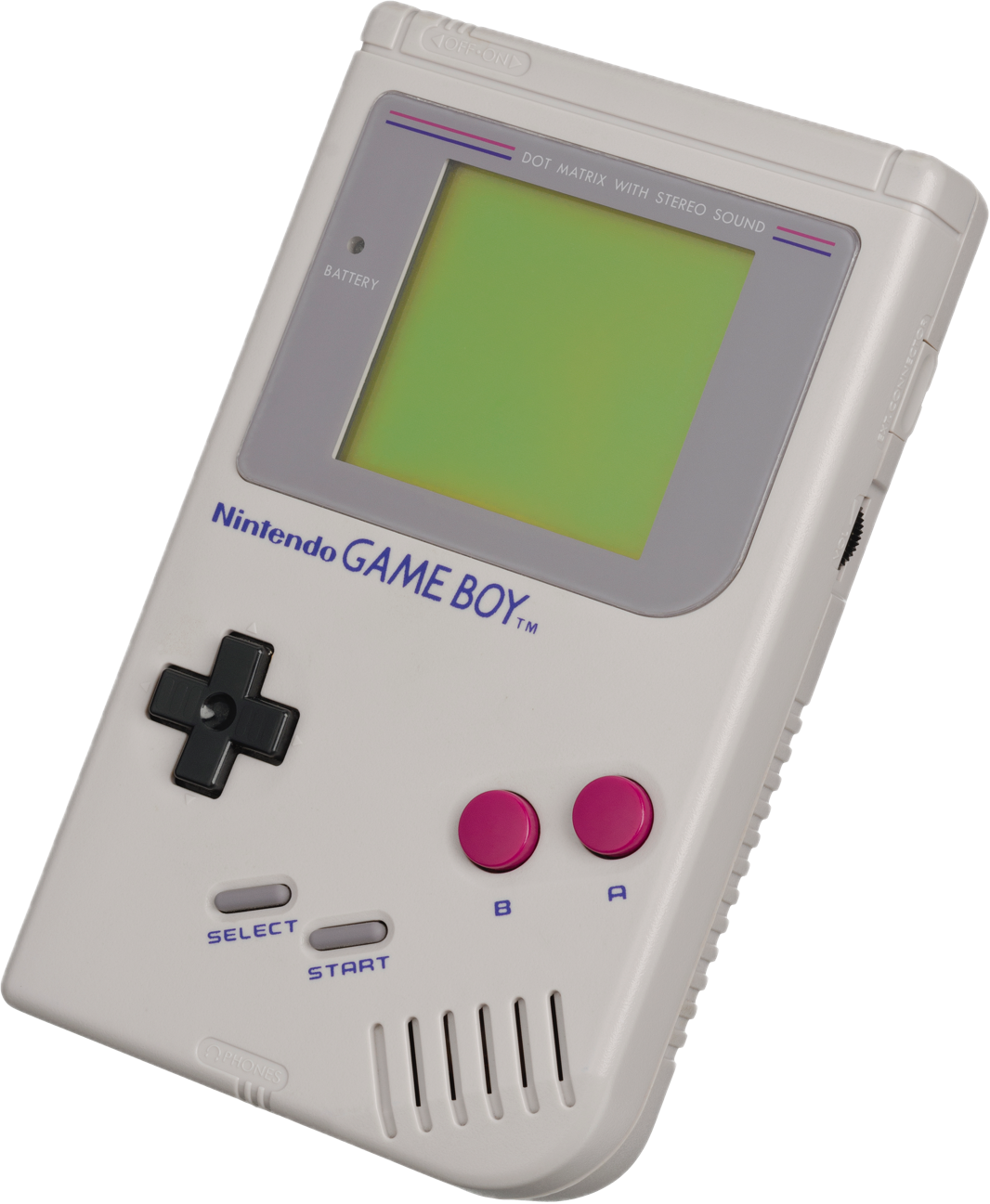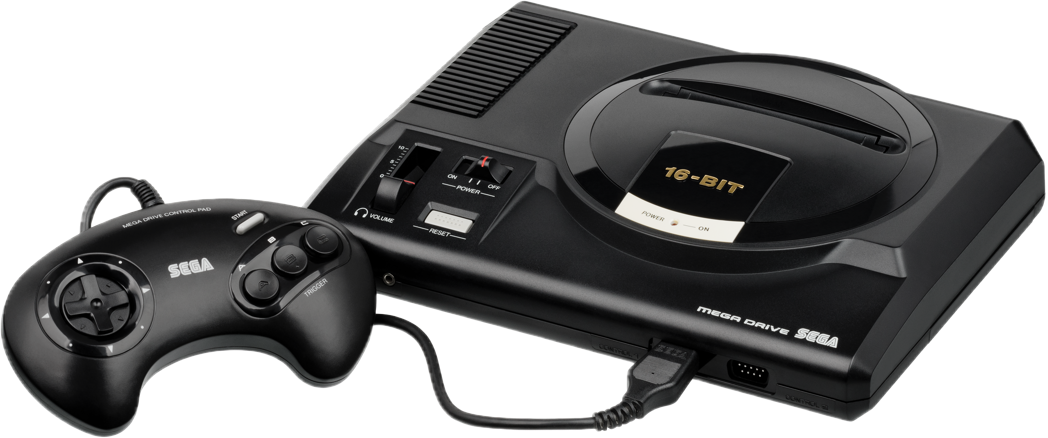Old-generation consoles such as Game Boy, Super Nintendo, and Sega Mega Drive hold a special place in the hearts of vintage gaming fans. These platforms not only defined the childhood and adolescence of many gamers in the 1980s and 1990s, but also established the foundation for the video game industry as we know it today.
Let’s talk about the enduring appeal of these iconic consoles, analyzing their history, cultural impact, and how they continue to influence the modern gaming world. From the Game Boy’s revolutionary design, which brought portable video games into the pockets of millions, to the Super Nintendo’s graphics and sound revolution and the Sega Mega Drive’s challenge against Nintendo’s dominance, each console has a unique story to tell.
Super Nintendo Entertainment System (SNES)
Launched in Japan in 1990 as the “Super Famicom” and later in other regions as the Super Nintendo Entertainment System (SNES), this system was the successor to the Nintendo Entertainment System (NES). The SNES marked a significant evolution in the field of video games due to its powerful 16-bit architecture, which allowed detailed graphics and high-quality audio. The console uses a Ricoh 5A22 processor based on the 16-bit 65c816 CPU core, and includes features such as Mode 7, which allows for rotating and scaling effects on images, helping to create a more dynamic and immersive gaming experience.

The SNES hosted a wide range of titles that became classics, such as “Super Mario World”, “Donkey Kong Country”, “Chrono Trigger”, and “Final Fantasy VI.” These games not only demonstrated the console’s technical capabilities, but also introduced innovative narrative and game mechanics. In addition, the SNES was the first console to introduce the controller with four front buttons and two shoulder buttons, a design that became a standard in the industry.
Game Boy
The Game Boy, launched in 1989, revolutionized the portable video game market. Designed by Gunpei Yokoi, the console was compact, sturdy, and had impressive battery life, especially considering the technological limitations of the time. Its popularity was fueled by the success of “Tetris”, a game that was often sold along with the console. Other major titles included the “Pokémon” series, which helped extend the console’s life far beyond initial expectations.

The Game Boy uses a custom processor based on Sharp’s Z80, a passive grayscale matrix LCD screen, and supports game cartridges up to 8 MB. Its popularity led to the development of several successors, including the Game Boy Pocket, the Game Boy Light (in Japan only), and the Game Boy Color, which introduced color support.
Sega Genesis
The Sega Mega Drive, known in North America as the Sega Genesis, was introduced in 1988 in Japan and later in other regions. This console was Nintendo’s major competitor during the 1990s and played a key role in the so-called “console war”. The Mega Drive is known for its powerful hardware, which includes a 16-bit Motorola 68000 processor and a graphics chip capable of displaying up to 64 colors simultaneously on the screen from a 512-color palette.

The Mega Drive’s game library was diverse and of high quality, with titles ranging from platformers to role-playing games. “Sonic the Hedgehog,” Sega’s flagship title, became a cultural icon, helping to establish Sega as a serious contender in the console market. Other notable games include “Altered Beast”, “Golden Axe”, and “Streets of Rage”.
Final Considerations
The Super Nintendo Entertainment System (SNES), the Game Boy, and the Sega Mega Drive were revolutionary consoles that marked a pivotal era in the history of video games. Each of these platforms made significant contributions in terms of both technological innovation and game design.
The SNES, with its advanced 16-bit graphics and the introduction of a more functional controller, pushed the boundaries of creativity and complexity in games. Titles such as “Super Mario World” and “The Legend of Zelda: A Link to the Past” became unforgettable classics, influencing game design for decades.
The Game Boy revolutionized the portable game industry, offering a robust and affordable platform with long battery life. Its impact was made even more significant by the success of games such as “Tetris” and the “Pokémon” series, which extended its appeal far beyond the typical video game demographic.
The Sega Mega Drive was a major competitor to the SNES, bringing forward competition in the so-called “console war”. The console introduced innovative and memorable games, with Sonic the Hedgehog becoming the symbol of the challenge to Nintendo.
These consoles not only defined the childhood and adolescence of many generations, but also laid the foundation for the future of video games. Their legacy continues to influence the video game industry today, demonstrating the enduring power of their innovations and creativity. Ultimately, the Super Nintendo, Game Boy, and Sega Mega Drive are not just pieces of technology; they are cultural icons that have shaped art and digital entertainment.






